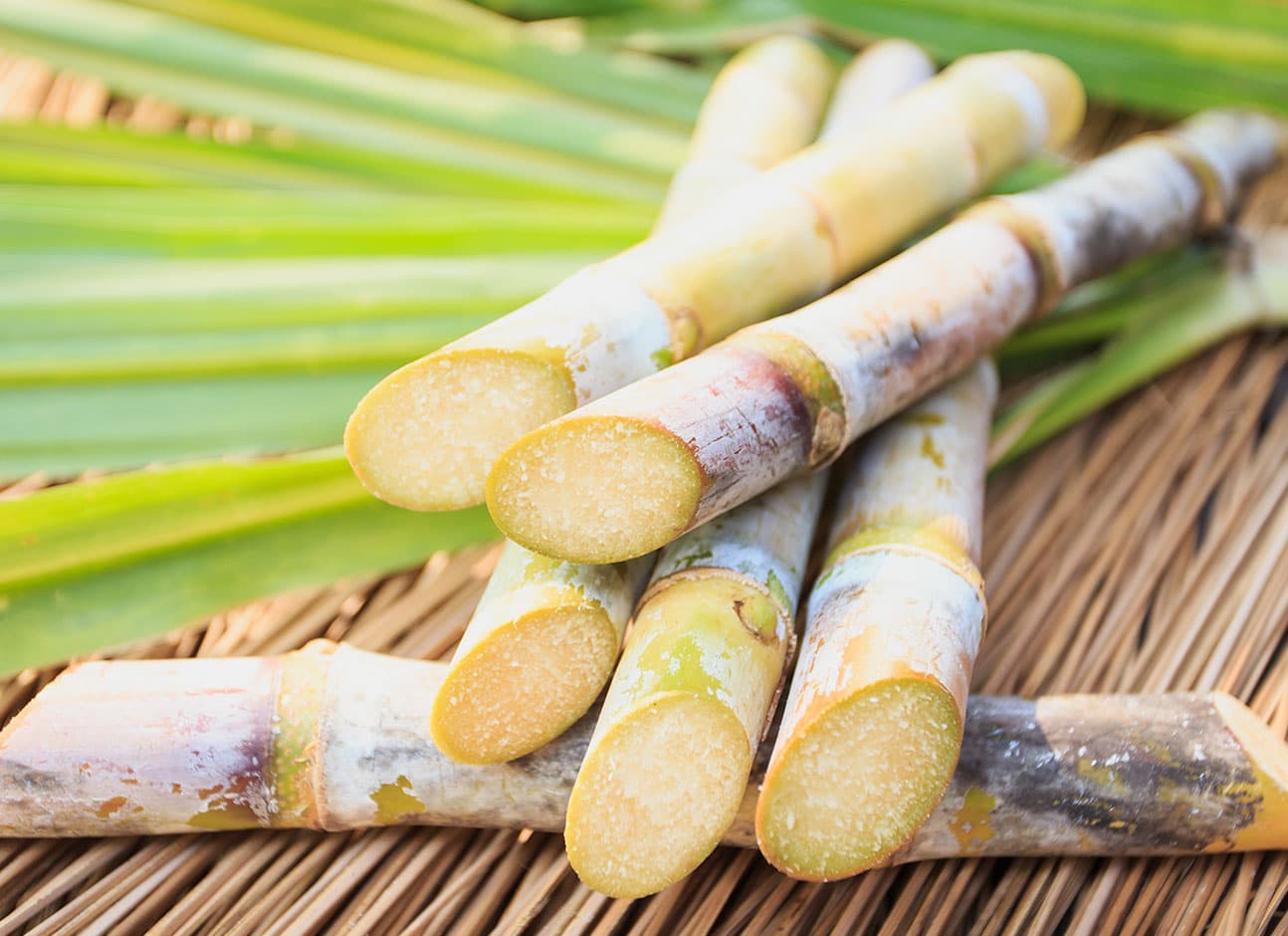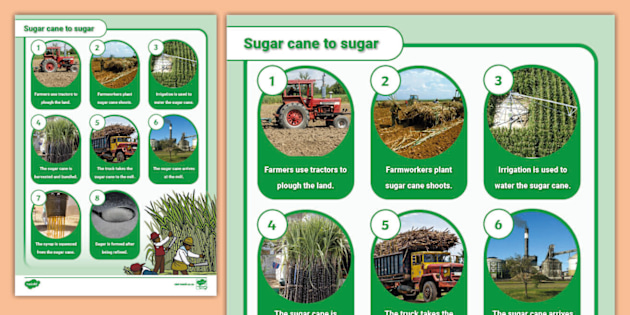Everything About Sugar Canes: What Are Sugar Canes Used For and Their Function in Global Farming?
Sugar walking sticks act as a foundation of worldwide farming, largely identified for their duty in sugar production. They likewise add to the creation of by-products like molasses and ethanol. These facets not just sustain various sectors yet likewise influence economic security in rural areas. Nevertheless, the farming of sugar canes faces significant ecological obstacles. Recognizing their diverse duty prompts additional expedition into their agricultural techniques and sustainability initiatives.
The Agricultural Process of Sugar Walking Cane Cultivation
Although sugar walking stick farming might differ by area, the basic agricultural process continues to be regular. The first step includes choosing high-yielding selections ideal for neighborhood environments. Prep work of the soil is crucial, often calling for husbandry and the enhancement of fertilizers to enhance fertility. Planting commonly occurs throughout the stormy period, with farmers making use of either entire stalks or cuttings to establish brand-new crops.As the plants expand, they require attentive treatment, consisting of weed control, pest management, and irrigation, relying on the environmental problems. Farmers check the sugar walking cane's growth cycle, which typically spans 10 to 24 months, prior to harvesting. Gathering is labor-intensive, commonly carried out by hand or with specialized equipment, guaranteeing minimal damage to the stalks. Complying with harvest, the cane is carried to refining facilities. This meticulous farming procedure not only sustains regional economies however additionally plays a substantial function in global agricultural methods, contributing to food and power materials.
Sugar Manufacturing: From Cane to Crystal
The trip of sugar manufacturing starts the moment newly collected sugar walking cane comes to processing centers. The initial step involves cleaning and chopping the walking stick to prepare it for extraction. Utilizing high-pressure rollers, the juice is removed from the smashed walking cane, leading to a wonderful fluid called sugarcane juice. This juice undertakes information, where contaminations are eliminated via the addition of lime and heat.Next, the clarified juice is focused by boiling it down to develop a thick syrup. This syrup is then taken shape by cooling, enabling sugar crystals to form. The crystallized sugar is separated from the continuing to be syrup, called molasses, via centrifugation.Finally, the sugar crystals are cleaned and dried out, causing the acquainted granulated sugar (What Are Sugar Canes Used For). This procedure changes raw sugar walking stick right into an item that is important to different cooking and commercial applications, highlighting the value of sugar in international farming
Biofuels and Sugar Canes: A Lasting Future
As the globe progressively looks for lasting energy options, sugar walking canes have actually become an appealing source for biofuels. The biomass stemmed from sugar walking canes can be exchanged ethanol, a renewable gas option that substantially minimizes greenhouse gas discharges compared to nonrenewable fuel sources. This process not just supplies a cleaner power source yet additionally advertises power self-reliance for several countries.In addition, sugar walking cane cultivation sustains country economic climates by developing tasks in both farming and biofuel production markets. The usage of sugar canes for biofuel production likewise encourages agricultural diversification, which can enhance dirt health and minimize reliance on solitary crops. The byproducts of sugar walking stick processing can be utilized for power generation, additionally contributing to a sustainable power cycle. As countries endeavor to meet eco-friendly energy targets, sugar walking sticks are positioned to play an important function in forming an extra lasting future in the biofuel landscape.

The Duty of Sugar Canes in Beverage Manufacturing
Sugar walking sticks play a substantial role in drink production, functioning as a key component in rum and adding to the sweetness of several sodas. In addition, their all-natural juices are made use of in different drinks, enhancing flavor and charm. This convenience highlights the value of sugar walking sticks in the global drink industry.
Sugar Walking Stick in Rum
Rum production is intricately linked to the growing of sugar walking cane, a vital plant that offers the needed fermentable sugars needed for fermentation. This process starts with the extraction of juice from harvested sugar walking canes, which is after that either fermented straight or processed right into molasses. Yeast is included to convert the sugars into alcohol, causing a varied range of rum styles, from light to dark selections. The geographical area where the sugar cane is grown substantially affects the flavor profile of the rum, with factors such as soil type and environment playing vital duties. Nations like Barbados, Jamaica, and Cuba are renowned for their rum production, mirroring the historical and social significance of sugar walking cane within the worldwide beverage industry.
Soft Drinks Sugar Source

Natural Juice Manufacturing Uses
In addition to its significant duty in soft beverage manufacturing, sugar walking cane is additionally crucial in the natural juice industry. The juice removed from sugar walking cane, called walking cane juice, is celebrated for its all-natural sweet taste and one-of-a-kind taste account. This juice is commonly consumed fresh in different regions, particularly in tropical nations, where it is appreciated as a rejuvenating drink. Additionally, walking stick juice functions as a base active ingredient in a variety of natural fruit juices and healthy smoothies, enhancing both preference and dietary worth. Its natural residential or commercial properties make it an attractive alternative to artificial sugar, appealing to health-conscious consumers. Generally, sugar walking cane's convenience in juice manufacturing underscores its importance in modern-day drink offerings worldwide.
Innovations in Sugar Cane Byproducts
Technologies in sugar walking stick byproducts are leading the way for sustainable services in different markets. Biofuels derived from sugar cane offer a different power source, while improvements in lasting packaging are minimizing dependence on typical products. These growths highlight the convenience and capacity of sugar cane past its main usage in beverage production.
Biofuels From Sugar Walking Stick
How can the results of sugar walking cane add to sustainable energy solutions? The conversion of sugar walking cane into biofuels presents a promising avenue for sustainable energy. By making use of the fibrous residue, understood as bagasse, manufacturers can produce bioethanol through fermentation processes. This bioethanol can function as a lasting option to fossil fuels, minimizing greenhouse gas you could check here discharges and reliance on non-renewable resources. Additionally, molasses, an additional byproduct, can be fermented to generate biofuels, maximizing resource efficiency. The energy produced from sugar walking cane not only provides a cleaner gas source but likewise improves the general financial practicality of sugar manufacturing. By integrating biofuel manufacturing right into their procedures, sugar walking cane sectors can play a necessary function ahead of time lasting energy remedies worldwide.
Sustainable Product Packaging Solutions
Sustainable product packaging solutions are significantly being created from check that sugar cane byproducts, showcasing the flexibility of this farming staple. Advancements such as eco-friendly plastics originated from bagasse, the fibrous deposit left after juice extraction, are acquiring traction. These products supply an eco-friendly choice to conventional plastics, minimizing reliance on nonrenewable fuel sources and decreasing carbon impacts. In addition, sugar cane-based packaging is compostable, damaging down naturally without hurting the setting. Business are now discovering these choices to align with customer need for sustainability. As recognition of plastic contamination grows, the fostering of sugar cane-derived packaging is anticipated to rise, positioning sugar canes as a vital player in the change to greener product packaging solutions in various sectors.
Economic Influence of Sugar Walking Cane Farming

Although sugar cane farming has deep roots in several economies, its economic impact expands much past farming manufacturing. This plant functions as a substantial income for numerous farmers worldwide, especially in establishing countries where agriculture is a primary resources. Sugar walking stick adds to regional economic situations with work creation in harvesting, processing, and farming. The sector likewise promotes development in associated markets such as transport, tools manufacturing, and food processing.Furthermore, sugar walking stick is a principal in worldwide trade, affecting international markets and costs. Countries that generate sugar walking cane usually rely upon exports to improve their economic stability. The spin-offs of sugar cane, such as ethanol and molasses, diversify earnings streams for farmers and add value to the farming field. On the whole, the financial implications of sugar cane farming are profound, affecting not only farmers yet additionally entire communities and nationwide economies.
Environmental Factors To Consider in Sugar Walking Stick Farming
While sugar cane farming plays a crucial duty in lots of economic climates, it also elevates substantial environmental issues that can not be forgotten. The extensive usage of fertilizers and chemicals in sugar walking stick cultivation frequently brings about soil degradation and water pollution. Overflow from these chemicals can contaminate neighboring water bodies, harming marine ecological communities. Furthermore, the monoculture techniques widespread in sugar walking cane farming lower biodiversity, making ecological communities more at risk to pests and diseases.Deforestation is another vital problem, as land is often cleared to make way for sugar haciendas, causing habitat loss for wildlife and enhanced carbon discharges. The high water usage needed for sugar walking cane watering can stress neighborhood water sources, specifically in arid regions. As international need for sugar remains to climb, addressing these environmental obstacles comes to be critical to guarantee lasting techniques in sugar walking cane growing.
Often Asked Questions
What Are the Nutritional Conveniences of Sugar Walking Cane?
The dietary benefits of sugar walking stick primarily include its high carb content, providing power. Furthermore, it consists of vitamins, minerals, and antioxidants that may support general health and wellness, though small amounts is crucial due to its sugar content.
Exactly How Does Sugar Walking Cane Affect Local Ecosystems?
Sugar walking cane farming can significantly impact regional communities by modifying land usage, influencing biodiversity, and requiring substantial water resources. Additionally, it might result in dirt destruction and chemical runoff, interfering with bordering habitats and wild animals populaces.
What Is the Background of Sugar Walking Cane Cultivation?

Exist Alternatives to Sugar Walking Stick for Sugar Manufacturing?
Alternatives to sugar walking cane for sugar manufacturing consist of sugar beets, corn, and various tropical plants like sorghum and agave (What Are Sugar Canes Used For). These plants use diverse sources of sweet taste, each with distinctive growing demands and ecological influences
Just How Do Weather Patterns Influence Sugar Walking Stick Yields?
Weather condition patterns significantly influence sugar walking cane returns via temperature level variations, rainfall amounts, and seasonal cycles. Dry spell or excessive rainfall can prevent growth, while excellent problems improve photosynthesis, ultimately influencing the quantity and high quality of the harvest. The trip of sugar production begins the moment fresh gathered my blog sugar walking stick arrives at processing centers. The taken shape sugar is separated from the staying syrup, recognized as molasses, through centrifugation.Finally, the sugar crystals are cleaned and dried out, resulting in the familiar granulated sugar. Rum production is delicately linked to the growing of sugar cane, a necessary crop that offers the needed fermentable sugars required for fermentation. Furthermore, the monoculture methods common in sugar walking stick farming minimize biodiversity, making ecosystems a lot more vulnerable to parasites and diseases.Deforestation is one more vital problem, as land is commonly gotten rid of to make method for sugar haciendas, leading to habitat loss for wild animals and raised carbon exhausts. Alternatives to sugar walking cane for sugar manufacturing include sugar beetroots, corn, and various exotic plants like sorghum and agave.